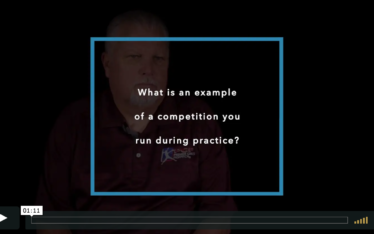There are a variety of terms and phrases used to describe how to best swing the bat in softball. We know that all of the information can be confusing. We’re here to help clarify and break through a few myths about hitting and simplify a complex topic. Today we’ll cover two hotly debated terms – linear and rotational.
MYTH: You must have either a rotational or a linear swing
Both terms (rotational and linear) have been used to describe a variety of movement patterns. There is also frequently a belief that it’s all or nothing – that you have solely a linear swing, or solely a rotational swing. Most swings actually include elements of both movements.
In very simplified terms, let’s describe the two types of swings.
“Linear” is often used to describe as a swing that pushes the hands and the bat towards the ball and finishes “through” the ball, without as much rotation of the middle of the body. This swing is frequently described by proponents as being advantageous for hitting for average.
“Rotational” is often described as a turning of the middle of one’s body (core, legs, glutes) and staying more “connected”, i.e. not pushing hands. This swing is often described as being more advantageous for hitting for power.
The good news is that a high level swing doesn’t necessarily have to sacrifice one for the other.
FACT: Your swing has both linear (stride/transfer of weight) and rotational components
When we analyze a high level swing, we can see that there are components of both movements. If we limit ourselves to just one of those movement patterns, we limit our ability to execute a high level swing.
The linear component occurs early in the swing, with the stride and transfer of weight into the front side. The rotational component can occur once at least 51% of the weight is on the front side. Put simply, this is when we use the middle of our body (think core, legs, glutes) to rotate and begin to turn into the ball. If we put our “gears” together in order – i.e. use the big parts (middle) to turn the little parts (hands, arms), then we can work to hit for both average and power.
Experiment with your own swing and the words you use with players, watch video of hitters of all levels, and see what the most successful do. We think you’ll see a combination of movements.





About The Author
ONE Softball Staff
The ONE Softball editorial staff has decades of success in coaching and business. Coming from diverse backgrounds and experiences, the founders share one common goal: to help the softball community come together. We are excited to provide crucial resources for players, parents and coaches to succeed at every level.